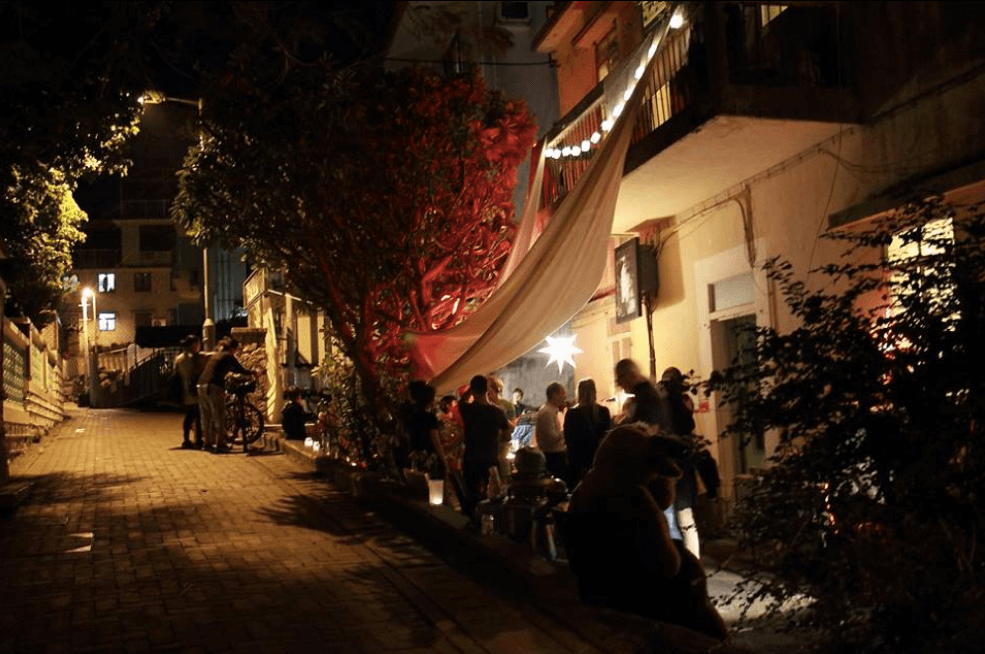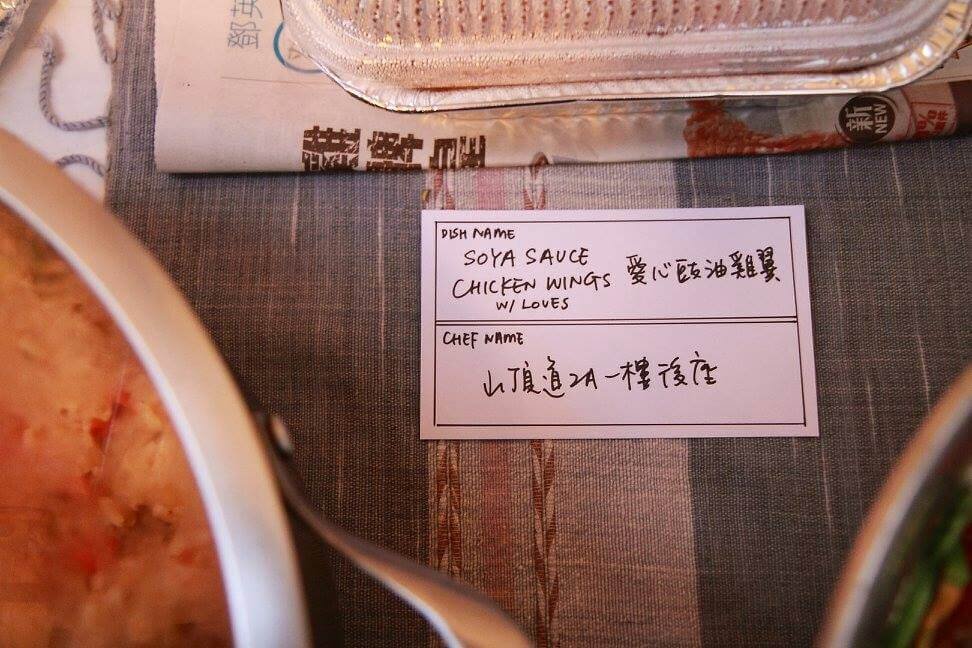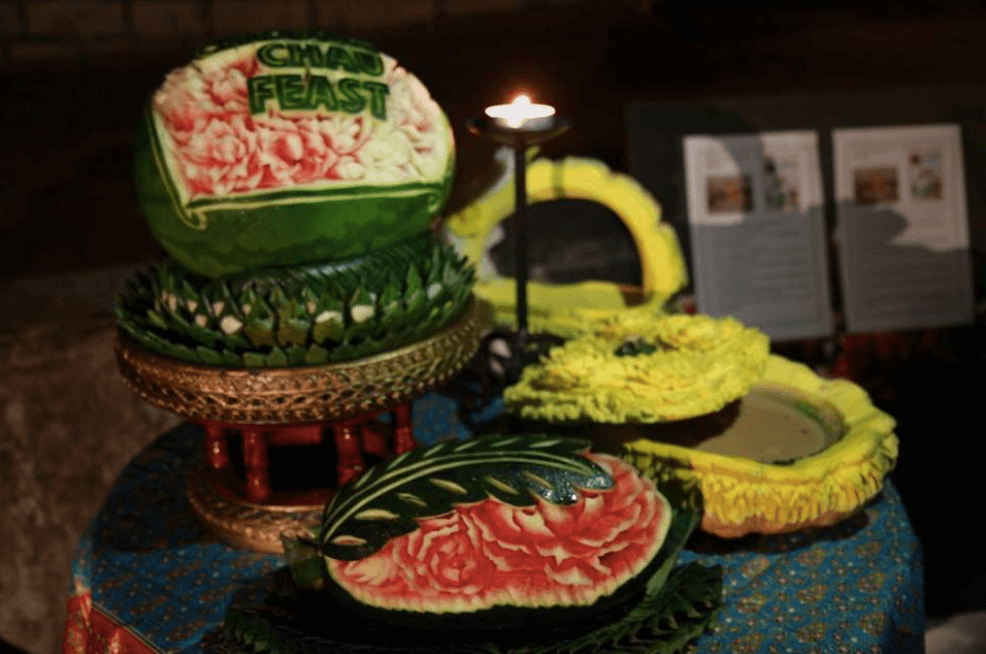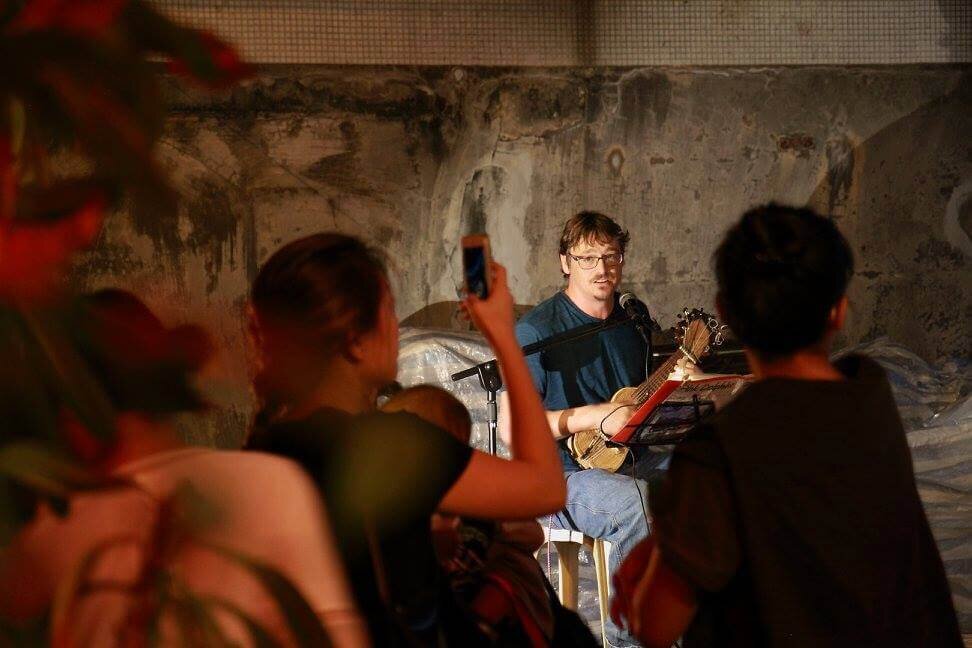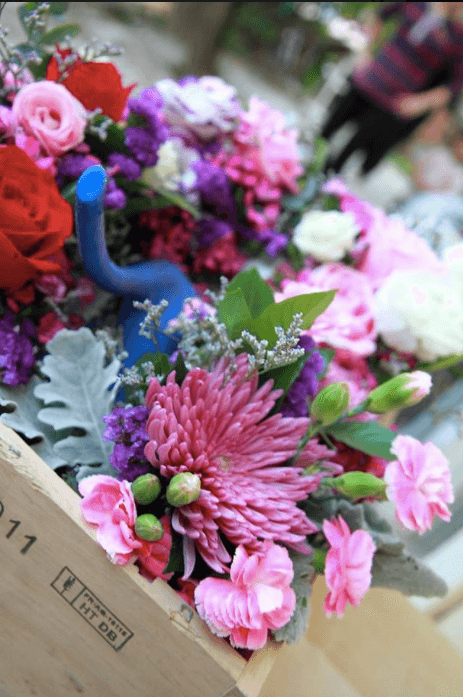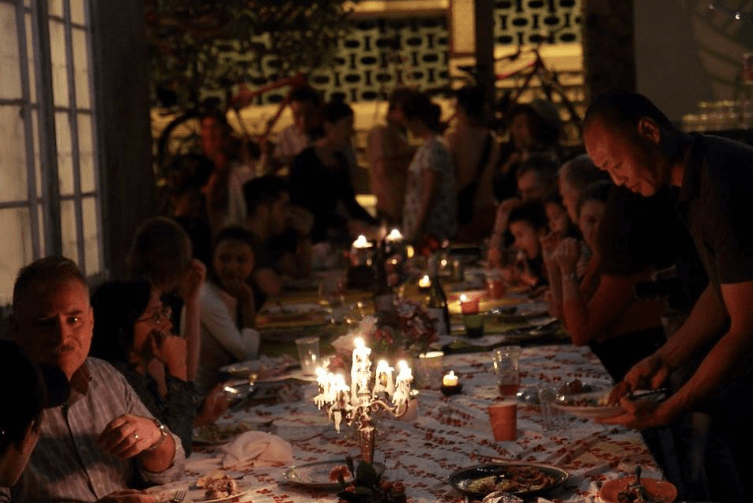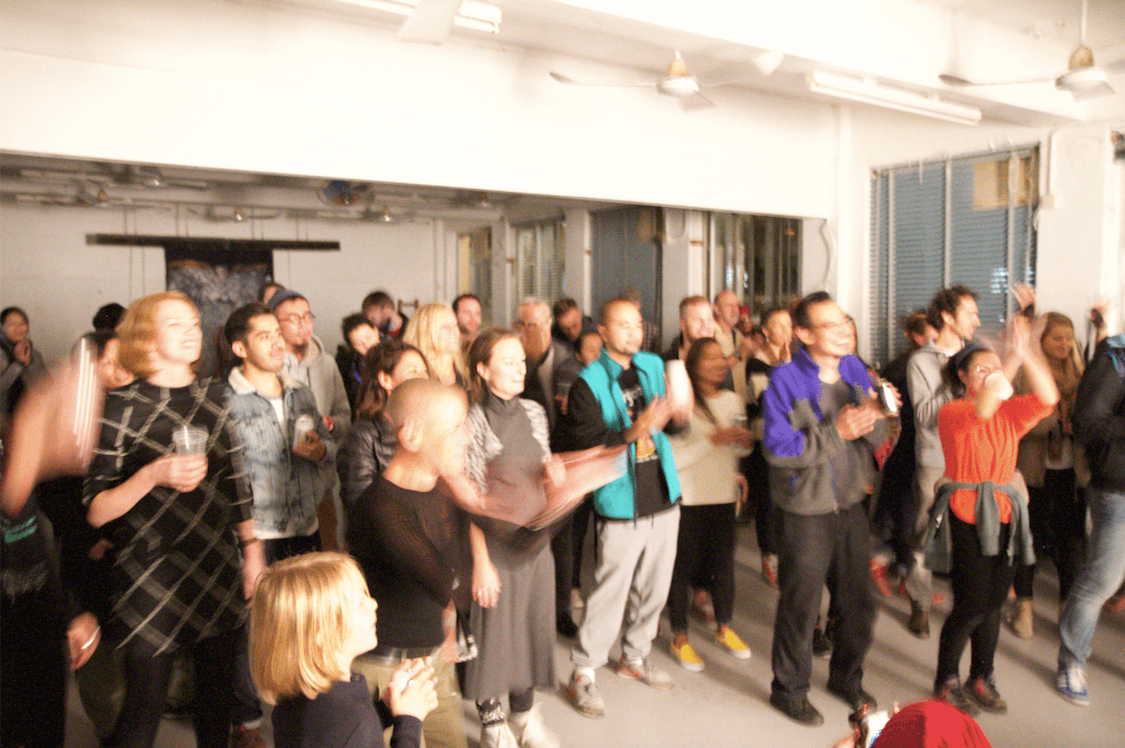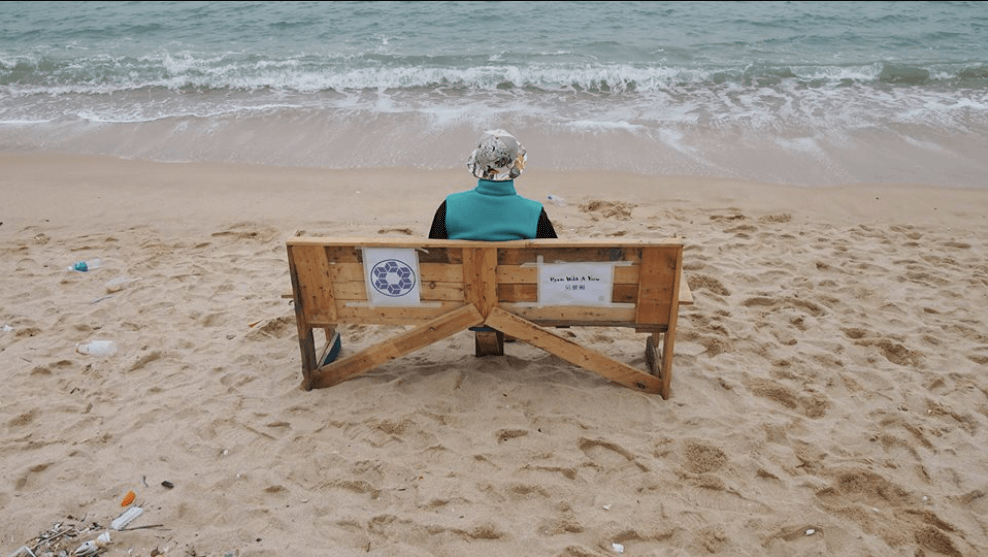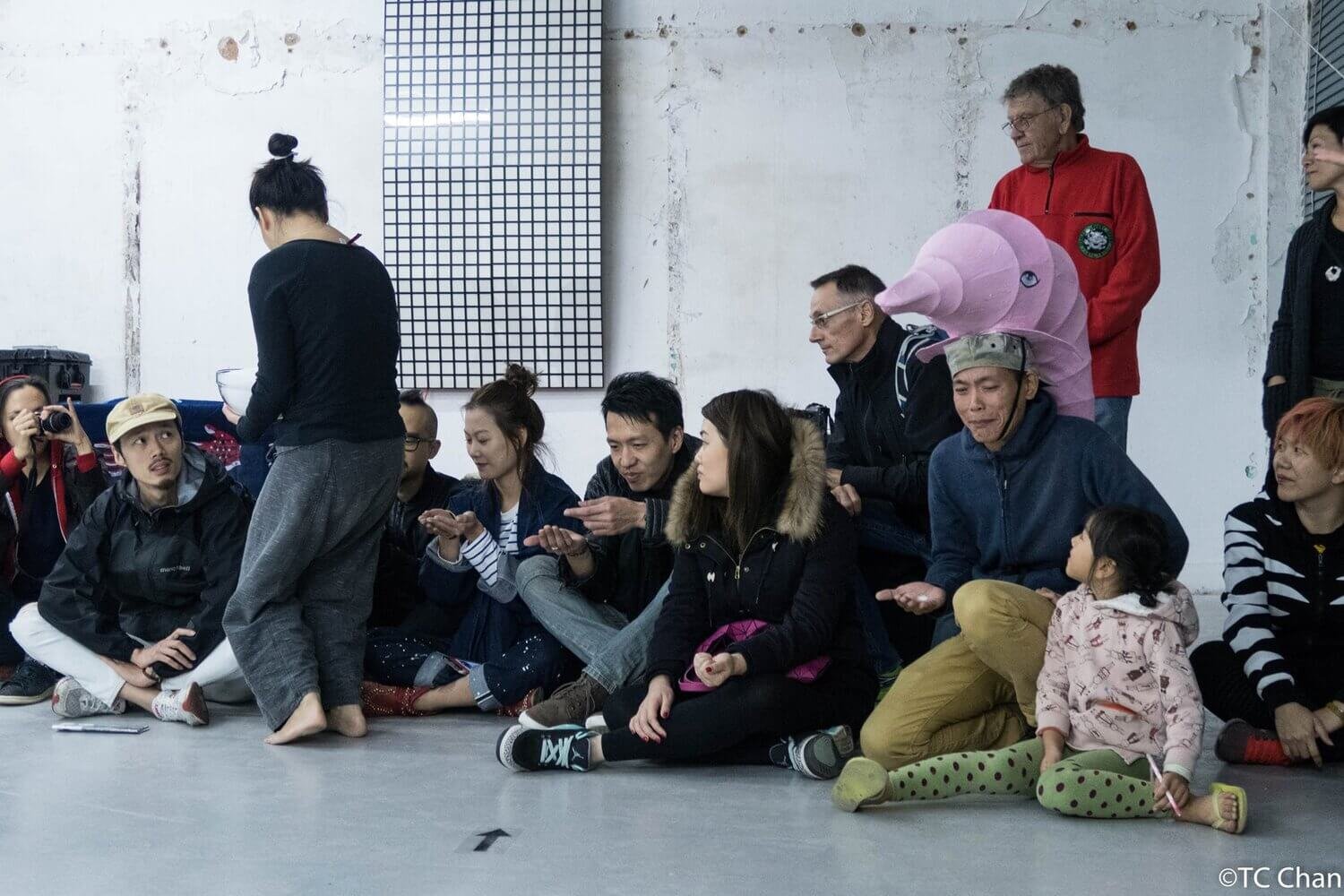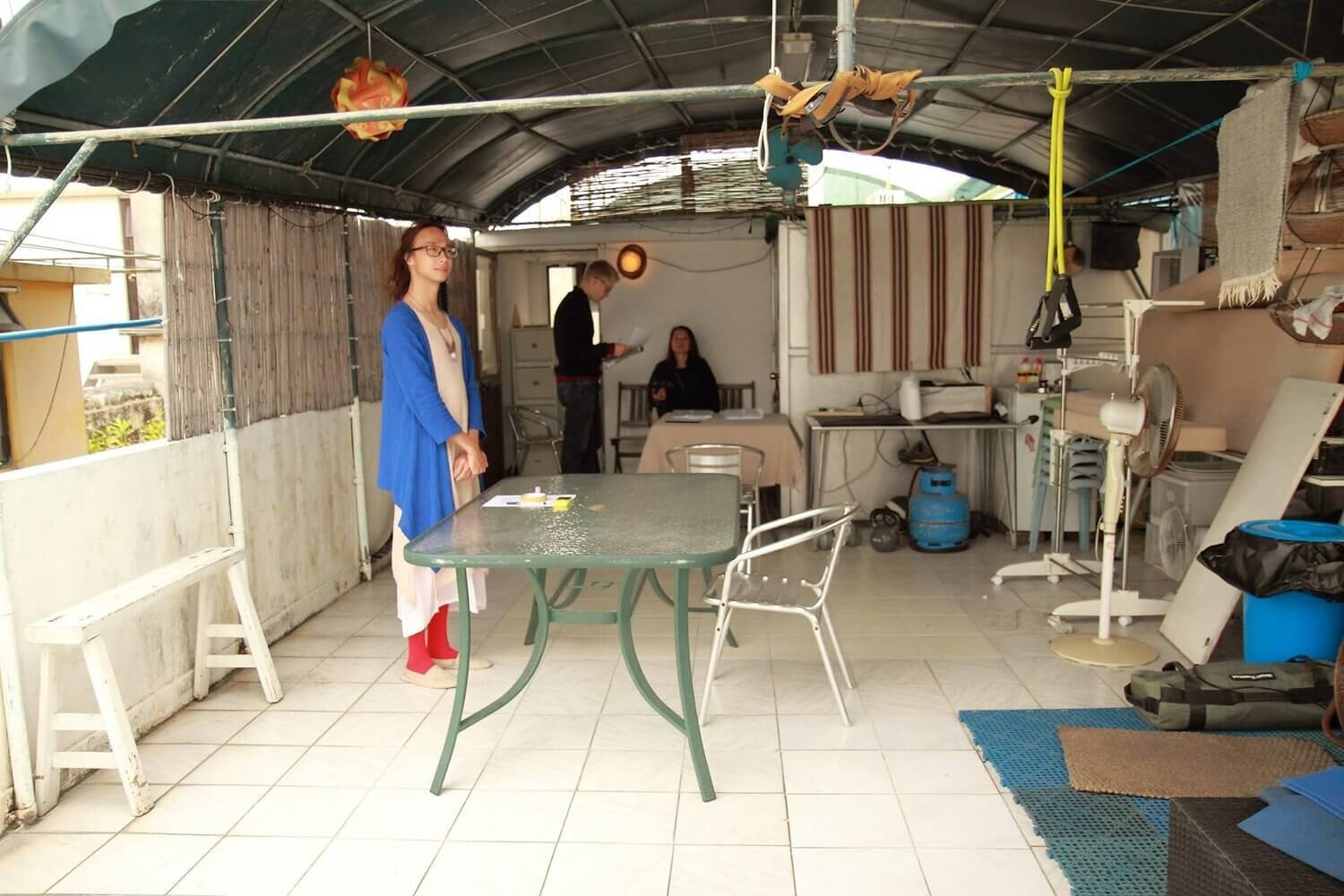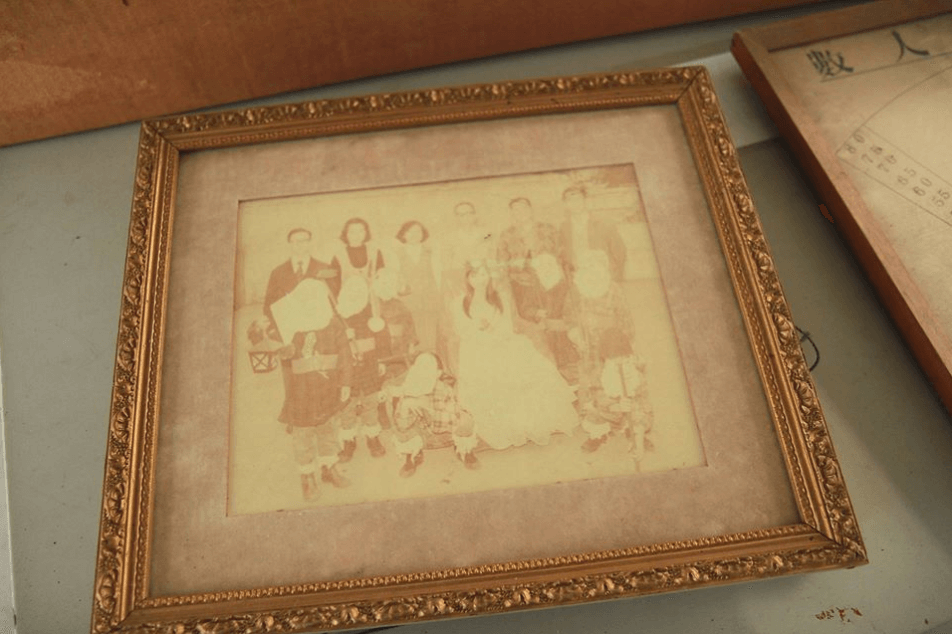About
Cheung Chau Wave 浪長洲 is a non-profit community project run by a bunch of creative volunteers who believe the island would benefit from a platform that promotes local art and culture and the people behind it. A key component is to foster artistic exchange and dialogue between locals and to invite outsiders to share in this. Going into its third annual event in the form of an arts festival, Cheung Chau Wave 浪長洲 aims to echo the unique, alternative and independent spirit that exists on the island.
「浪長洲」藝術節由一伙來自創意藝術行業背景的長洲居民義務發起,希望在長洲建立一個為島上藝術家、文化傳承者的交流平台。「浪長洲」以各種形式促進島上居民間和外界的藝術和文化交流。今年,我們以藝術節的形式,把島上獨特、另類和人文精神讓更多的人接觸。
Festival Vision
Cheung Chau, known as the “long island” is located 10 km southwest of Hong Kong Island, just a little dot in the South China Sea. Habited longer than any other island in the region, it harbours an incredible wealth of culture, history and traditions. Built by street traders and fishermen/women, who through performance, song and linguistic expletives, plied their trade and created the atmosphere we all fall in love with when stepping off the ferry. It is an island bursting with festivals and fishing, once a place for farming and manufacturing, a history of piracy and smuggling and now a spot tourists flock to for fishballs and mango moji. This context led many artists, art administrators, poets, intellectuals, musicians, writers and other creatives to settle on the island and share within the vibrant community.
長洲,一個位於香港島西南10公里的海島。雖然只是在南中國海圖上很小的一點,但該區亦是人類集居歷史最悠久的其中一個小島,擁有非常豐富及特別的人文生態丶文化丶歷史及漁民傳統。 短暫遠離市區,踏出碼頭就會愛上這個還保留傳統文化的小島。不論的盜歷史或者新起的魚蛋芒果糯米糍,都是給藝術家、藝術行政、詩人、音樂家、作家等等無限的創作靈感。
+ Read More
Cheung Chau Wave reflects this alternative working and living mode in relation to Hong Kong the city and contemporized existence. Maybe we can learn something by looking toward village life and island trade as a format and approach for an arts festival? In accordance with this we choose to primarily approach local businesses for financial support, trying to “keep things on the island."
與香港島和現代化的城市生活對比,長洲的生活狀態就是「浪長洲」藝術節希望呈現的。整個活動支出都是以島上商店和居民中籌款而來,這是一個真真正正屬於長洲的藝術節。
Started in 2015 by local residents, this community initiative wishes to highlight and share the creative, cultural and intellectual work made by its inhabitants. Bringing people together with a common interest in all things creative and open to all art forms and cultural expressions. Cheung Chau Wave hopes to become an established and sustainable community festival primarily, and secondly to create events that expose outsiders to go “off the beaten [tourist] track” and straight into the true heart of the island.
始於2015年,每年以各種藝術創意形式把島民和島外居民聚集在一起。「浪長洲」藝術節旨在成為一個持續性的社區盛事,並讓更多島外的人欣賞非商業化的長洲一面。
Like Cheung Chau and its people we are ad hoc and decentralised, at mercy to the elements, highly resourceful and adaptable and slowly threading ourselves into the ongoing fabric woven by the island. We wish to celebrate the artists raised on its shores and those new explorers called to it and indeed to celebrate all aspects of living on this little dot in the South China Sea.
一直以來,長洲和島上的居民面對著各種變化,而這些都是在慢慢的編織著長洲文化。「浪長洲」藝術節就是要展現土生土長的長洲藝術家和受長洲文化影響的藝術家的作品。
Life By Water [2017]
Exhibition Page
Cheung Chau FEAST [2016] 一人一菜大食會
Feast Page
Stories of food are stories of us, where we are from and where we have lived. Our second intervention was driven by a desire to find something that binds us all and could help us to attract new island residents to our activities. Thus we created FEAST, an open dinner where anyone could join and bring a dish with a story or with an element of personal significance. A long candle lit table became a space to talk and share in one of the most joyous things in life, food. Michael Pollan says, "the shared meal elevates eating from a mechanical process of fuelling the body to a ritual of family and community, from the mere animal biology to an act of culture." Food is of course an art form in itself but what more, it brings out memories and emotions and can transport us directly to childhood or even to other places is the world. From congee to homestyle Malaysian curry, Danish rice pudding and Irish stew, we brought a piece of ourselves to the table and all shared in each others cooking efforts.
食物的故事就是我們的故事,我們來自哪裡和我們生活在哪裡。我們的第二個活動動機,是出於尋找一個方式來吸引還沒認識我們的島民。「一人一菜大食會」是一個開放式的晚餐,任何人都可以參加,參加者只要帶上一道有故事的菜式就可以免費參加。點上蠟燭的長桌很快就變成大家聊天和分享的空間。美國飲食研究作者 Michael Pollan 說過,“共享食物是提升進食行為從一種機械式的生物需求到一種家庭和社區的文化儀式。“食物本身也是藝術,它引發記憶和情感,可以把我們直接帶到童年甚至世界任何一個角落。從生滾粥到馬來西亞咖哩雞、丹麥米飯布丁和愛爾蘭燉肉,我們把自己的一部分帶到餐桌上。
+ Read More
This event also showcased the amazing fruit carving skills of Suthin Lauwongkot, we had Evan Binkley singing original songs related to Hong Kong food culture, a haunting violin and opera performance from Fleur Du Mal, John Poole’s poems related to food adorned each plate and the walls were light by projected images of London based artist Simon Reuben White collage series, Veg Tarot.
美食以外,我們也邀請了幾位藝術家參與活動。Suthin Lauwongkot在現場展示了她驚人的水果雕刻手藝;Evan Binkley自彈自唱有關香港美食文化的原創歌曲;Fleur Du Mal不單演奏小提琴樂曲還唱起歌劇;John Poole在每一個碟子上擺放了與食物有關的自創詩歌一首;在牆上投影著倫敦藝術家Simon Reuben White的拼贴画系列:蔬菜塔罗。
Cheung Chau is filled with traditions that are constantly evolving, having specific community street feasts is a regular occurrence, but we wanted to make something welcome to all and to celebrate the multi cultural background of many local residents; indeed we have so much to learn from each other. We asked ourselves: why not create new traditions and build new positive memories together?
長洲是充滿著在進化的傳統,在街上舉辦街坊飲食大會是常見的。不過我們希望舉辦一個屬於所有的大食會,不論什麼文化背景。我們反問自己:為什麼不共同創立新的傳統並共同製造正面的回憶?
Guest Host Ghost [2015] 踟躕私房
Exhibition Page
Our first festival came into being from the simple enthusiasm to make a one-off art event on Cheung Chau. We could see a gap existed considering so many artists living on the island [we ourselves being some of them] and yet Cheung Chau has no festival or gallery of its own to showcase their work or indeed a forum to bring those people together. A small group of art practitioners came up with the concept of exhibiting and hosting art in non-art spaces whereby the guests were given a map to find them, this quickly turned into a large scale multi-disciplinary festival with over 50 artists [from Cheung Chau, Hong Kong and abroad], 12 venues, 150 audience members and fully sponsored by local businesses. We wanted to make something that was fresh to Hong Kong; a festival open to all who wished to participate regardless of prestige or CV, a grass roots initiative that proved you could create a well visited event without having large scale corporate sponsorship or being part of the art establishment, a festival that does not favour any particular art form and to see if it is possible for such a festival to be concerned both with “community" yet also host critical and complex artwork.
第一屆的藝術節「踟躕私房」很純粹因為一股熱情開始。當時有幾位島民發現長洲有很多藝術家居住缺沒有任何展覽場地或者藝術節,更不要說讓各藝術家交流的平台。她們開始設想把數個非展覽空間變為展覽空間,最後成功邀請超過50個藝術家、12個場地、150位觀眾,而這個藝術節的開支都是由島上商戶贊助。
+ Read More
Guest Host Ghost was a concept, theme and curatorial approach to creating something, maybe to try explain something and to bring that thing forward on this unique island. The title refers to a set of cultural traits that can inspire self reflection, exploration and interpersonal relationships. The quest to engage with notions of longing and identity, tourism and migration and past and future - Guest Host Ghost became a channel for how the festival could manifest, how the artists might make work and how the audience might gage their experience. We even found ourselves floating between these 3 forms and the questions raised by the title gave space for many voices and thoughts to come out.
「踟躕私房」是一個概念、一個主題也是一個策展方向。「私房踟躕」中譯自 Guest Host Ghost,帶出獨特的文化特質以激發自我反省、自我探索和重新理解人際關係。 渴望和認同、旅遊和移居、過去和現在,「私房踟躕」就是一個體現藝術節的渠道,一個給予藝術家創作、觀眾體驗的渠道。名字的模糊性更帶來更多的聲音和思想空間。
For example one GHG artist, Preston Hartwick, used the idea of time as a ghost, in the centre of a big class room one finds a large empty fish tank with used fishing net inside and splayed outward like wings around the floor of the central installation as if to capture the effect of a choreographed explosion are many carefully placed pieces of ocean driftwood. The fish tank and net a mausoleum to a dying trade in fishermen school that also no longer exists. The drift wood pieces appear like time itself drifting, once floating in the ocean they are now remnants given the attention normally deserved of museums pieces. The artist becomes the guest as he happens upon them whilst walking on the beach and a collector as he takes them home. The sum of many parts ending up on the island, the artist is interested in "synchronicity and coincidence, the net being as much of a metaphor for destiny as an object, and about the fragile web of connection that is easily dissolved, dispersed, and forgotten."
比如說其中一位參與藝術家Preston Hartwick以時間的概念作為一只鬼。在可以大課室的中間擺放著一個使用過的大魚缸。裡面沒有水,只有漁網從魚缸裡展開並鋪滿空間,像爆炸的那一瞬間,課室裡還擺放著幾塊浮木。魚缸和網象徵著一個垂死的漁民學校的墳墓,而漂流的浮木看起來像時間本身在漂流,曾經漂浮在海洋的浮木們,現在它們的殘餘得到博物館式應有的重視。藝術家Preston Hartwick以客人的身份在在海灘上散步,再以收藏家的身份把浮木帶走。Preston說,“很巧合,魚網好像是對命運的隱喻,網線的脆弱,容易溶解,分散,和被遺忘.”
Along the wall are 12 simple black and white dark room printed portraits, the far left being of the artist himself and the far right being of his father, the 10 in between slowly blur their two faces. There is a haunting quality as the faces created act as ghosts, the fact that there is no central portrait amplifies the idea of this work being about transition, transformation, and a passing through from one side to the other and in both directions, a continuous dialogue with the other side, the past and the future. It is also a coming of age story as the artist explains, "it's really about that single moment of discovery and recognition when you go from ignorance to knowledge. In this case the startling realisation that I am unwittingly becoming like my father and how that can influence choices in the future as we use that knowledge to try and steer ourselves towards a particular direction."
另外一個作品沿著牆,有12張簡單的黑白黑房沖洗肖像圖,最左邊是藝術家本人和最右邊的是他的父親,中間的10張是遞進式地融合他們兩張面孔。看著這個作品有驚掠的效果,作品是在轉變、轉型,從這一邊到另一邊,從另一邊到這邊,像過去和未來的對話。正如藝術家所解釋,“真的是當你從無知走向知識的那一刻發現和認可。我意識到我不知不覺地變得像我的父親,而當以這些知識試圖引導我朝向某個特定方向前進時,這會影響到未來的選擇."
Brian Chung-wai Ting and Stella Wing-yan Tsui’s performance installation Lighthouse took place in a private apartment on a hill whereby the performer leads you through the space, her body and the installation itself occupies this normally domestic living space, transforming her from the guest to the host. This is one of the more ethereal interpretations of the title Guest Host Ghost, firstly in format as the installation feels fleeting, we know as an audience the space will soon return to performing its usual function of home as well as through her movement which happens and passes in front of us and past us, the whole thing exists and does not exist at the same time. Secondly the gentle absurdity of for example the bathroom scene which we see through a gauze and also when she perches on the balcony ledge smoking a cigarette in her underwear, we are taken somewhere that is not quite of this world. It is cinematic, it is other. Her performative expression is in between here and there, aware yet aloof to the audience, intimate yet cold, as she moves there is no one position, no constant, she was all and none at the same time - in this sense our host is simultaneously a ghost and we are left wondering whether we were truly invited to partake or instead are somehow part of the wallpaper.
Brian Chung 和 Stella Tsui的演出劇目《燈塔》在山頂道一個私人樓層裡舉行。表演者帶領你穿越空間、她的身體和一個普通家居佈置中。她從客人變成主人。這是一個對主題Guest Host Ghost更空靈的演釋。整個裝置感覺是短暫的,我們知道作為一個觀眾,這個空間在演出結束後會返回原來住宅的功用,整個演出既存在又同時不存在。其次,美麗的荒謬如在浴室那一場中我們的「偷看」,還有她只穿著內褲在陽台上吸煙。這是很電影,這是不太現實。她的表演表現在這裡和那裡之間,與觀眾又親密又冷漠,她沒有一個位置、沒有恆定的。在這個意義上,她是主人同時是一只鬼,在我們離開的時候我們會想到底我們是被邀請或者只是作為她壁紙的一部分。
Another artist's sound installation Des dettes de cœur created by Priscilla Leung, transforms a small room on her rooftop into a fully darkened and insulated space that could only be visited by two person's at a time. The introduction of finding the apartment and climbing up the private dimly lit stairwell already sets the scene for an unusual experience. Once inside the room one sits down on a comfortable sofa, adjusting ones eyes to the lack of light and engulfed in the most beautiful of mantras sung [by the artist herself] by what could be a higher being, which we learn in the program notes is the "Heart Sutra". Leung explains, "I created the melody after I heard Chinese nuns chanting this mantra at a funeral long time ago." It is poetic that the singer leaves her voice in the room. The recording is detached from space and time and amplifies the feeling that oneself is also floating in some kind of void where one's new dominant sense is that of hearing. The audio-scape slowly puts you in a trance, making you wish to stay forever in this safe and womb-like environment, being soothed by the beauty of the human voice at its most magnificent and to enjoy the cleansing effect on your thoughts as they slow and become quiet. Her voice is ghost-like and yet also acts as a host who guides you through the experience and is always the centre point of your attention.
另外一個由藝術家Priscilla Leung創造的音效裝置声音装置 “Des dettes de cœur” 把她屋頂的一間小房间改變成一個完全黑暗和保溫的空間,每次只能有兩位參觀者。參觀者進去後會坐在很舒服的沙發上,眼睛適應黑暗的同時,參觀者會被美妙的聖歌吞噬。這首歌時藝術家在很多年前一個喪禮上曾經聽過的歌。這是一個充滿詩意,感覺完全脫離空間和時間的體驗。參觀者很容易沈迷在美麗的聲音中並希望永遠留在這個像子宮一樣有安全感的空間,它的緩慢和寧靜像是能幫你淨化思想。她的聲音像鬼魂,但同時也是帶你進入這個空間的主人、你最注意的部分。
One of our international artists who came to exhibit work from the Philippines, budoy, the contemplative guest who through his artwork and performance was sharing his Cebuano culture with us. A 10 metre long fabric scroll stretched across the biggest class room of the Fishermens school, from a distance one sees a colourful painting yet on closer inspection one realises that it is in fact depicting naked women masturbating coming from a large vagina at the top, with some kind of phallic snake slithering around the figures. The opposite of a peep show the artwork is literally sprawled out in front of you. We cannot help but question the male gaze of the artist and wonder, as one does with other forms such as pornography, who is the guest or the host, the women, the artist, the audience? Coming from a deeply Catholic country whereby such artwork could hardly be exhibited publicly gives it even more shock factor, yet at some point it becomes apparent one is facing something that hints at the pagan and at the sacred feminine. Maybe to appease the sins of the church or the sins of the artists' own sexual desires, there is something cathartic about this oversized scroll, built so it can be rolled up and hidden if necessary. Most of the female bodies are drawn with white outlines like chalk and we walk around the sexual scene looking down at the images, echoing the social taboo of female masterbation and yet the women depicted are sprawled and busy in their pleasure-making without a care in the world as if this "should" be the most natural thing. On Cheung Chau our most famous festival is in part to appease the ghosts and bring peace, maybe this scroll of sexual appeasement is a little peace offering itself.
我們其中一位國外的藝術家是來自菲律賓的budoy,一位沈思的「客人」透過他的作品和演出與我們分享宿霧文化。一條長10米的布橫跨漁會學校裡最大的教室,從遠處看是一幅色彩豐富的繪畫,仔細檢查你會意識到它其實是在描繪一些正在自慰的裸女從特大的陰道出來,附近有像陰莖的蛇在滑行。與偷窺秀成為反差,這個作品就躺在你面前逼使你觀看。你避免不了好奇作為男性藝術家的動機,如情色圖畫般,到底那些裸女、藝術家、觀眾誰是客人誰是主人?作為來自天主教國家的藝術家,更讓這樣的作品給予觀眾震撼的因素。但在某一點上看,它顯然是在暗示異教徒和純潔的女性。不管是在滿足教會的罪名或者藝術家的性慾,這一大卷的畫似是一種渲泄,如需要也好像可以捲著收起來。那些裸女大多數都是以白粉筆勾畫出輪廓,參觀者會俯視這個被認為是社會禁忌的場面。然而這些裸女不顧周圍忙碌的製造她們的快樂,好像這是最自然不過的事情。長洲最著名的節日其中一部分是以安撫鬼魂來換得平安,可能這一幅捲軸也有此目的。

